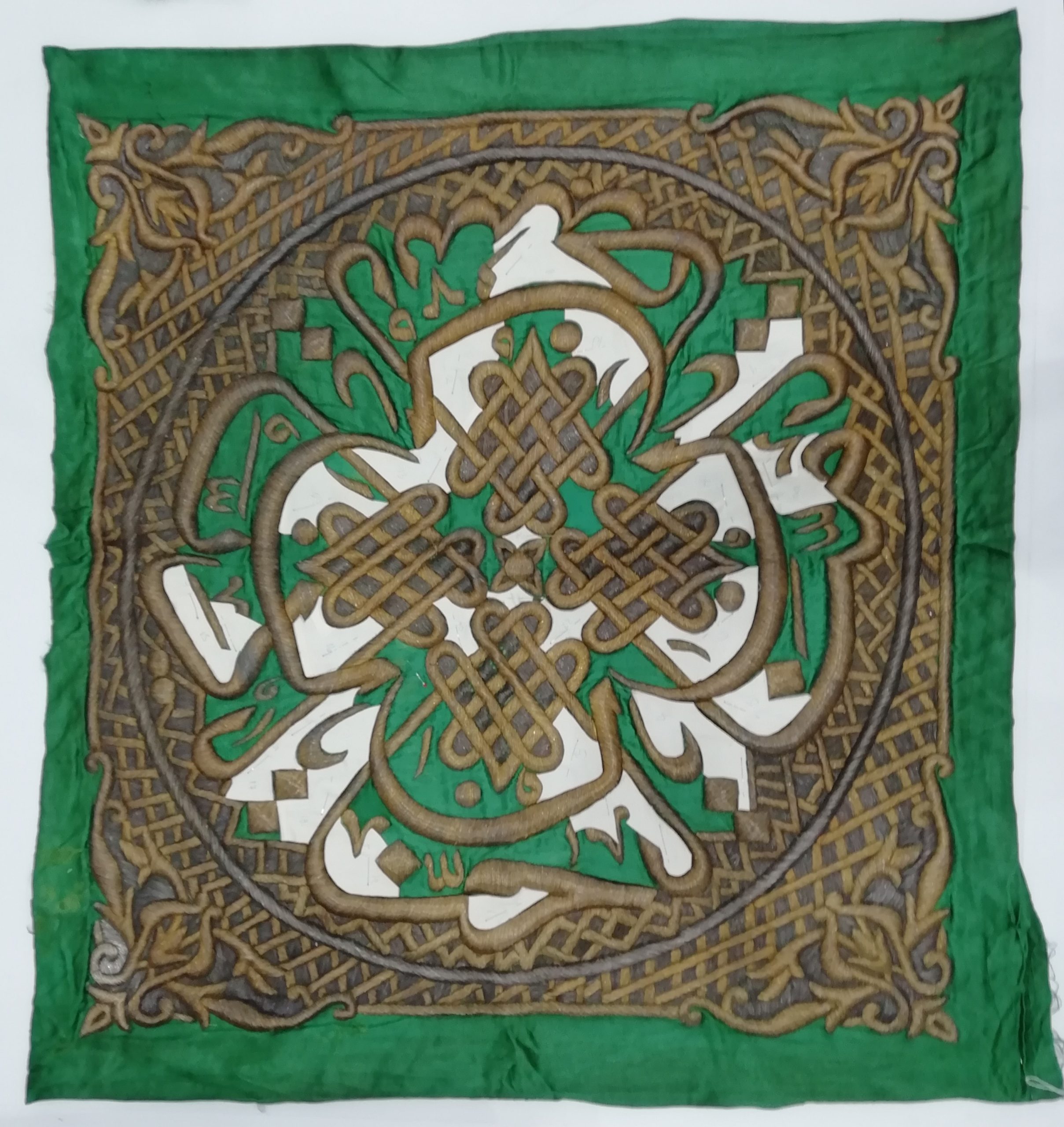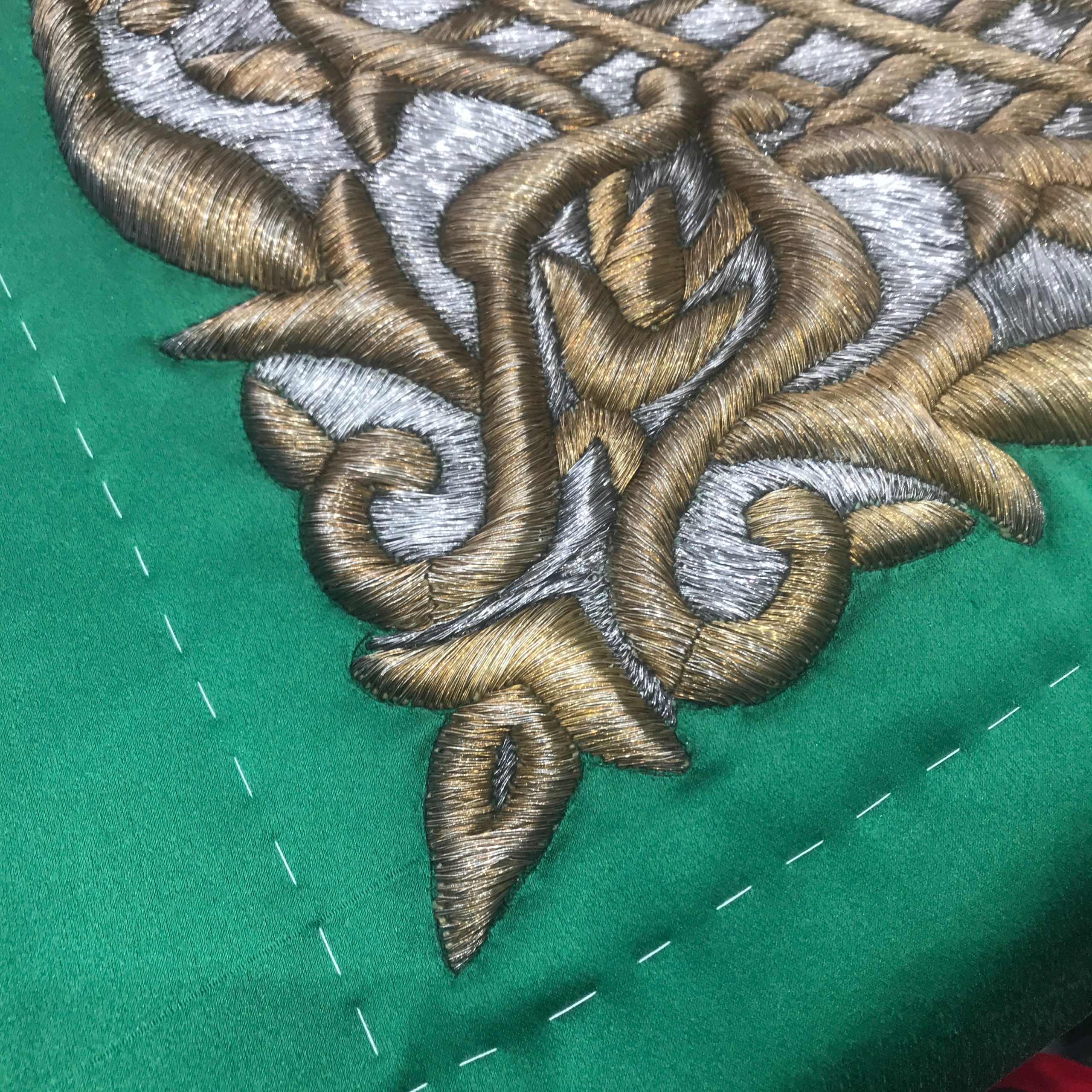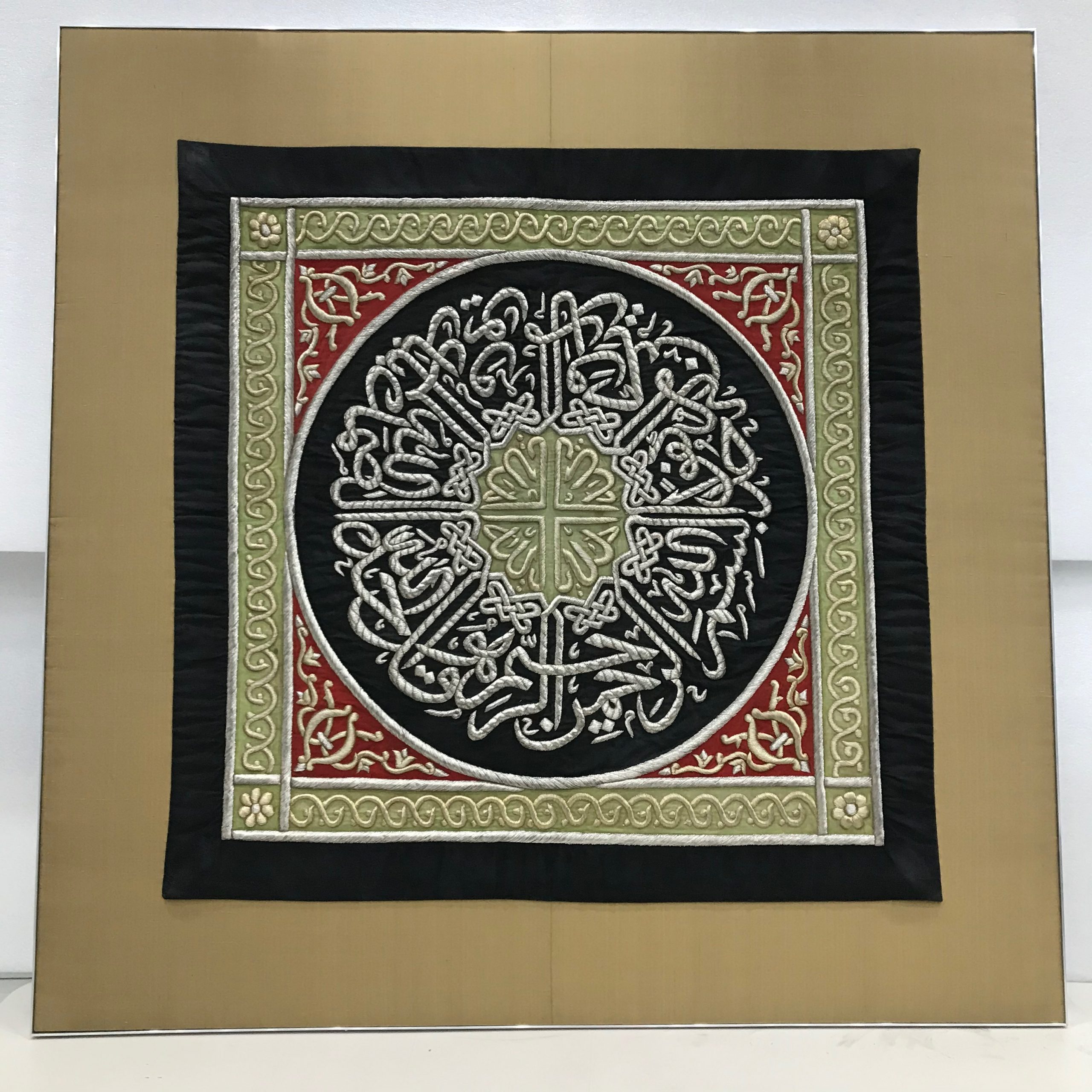
We have now treated a total of ten panels of embroidery for the Dubai Cultural & Arts Authority Collection in the United Arab Emirates. The panels once formed part of a number of 19th Century Kiswa made for the holy Ka’ba at Mecca. Each year a new Kiswa is embroidered in the traditional manner and often the old one is divided up with the pieces distributed as holy relics.
The first three arrived in 2014 with the final batch returning at the end of 2019. The panels we have worked on have varied in date and size, the larger panels are from the door curtain known as the sitara or burqu and the smaller panel (kardashiya) comes from the decorative belt (hizam) of the Kiswa. The ten embroideries, as a group, have offered a unique set of challenges and the opportunity to develop new techniques over the three phases of the project. The immediate issues for us were their size (the largest coming in a just shy of 3m), their enormous weight and their non-rollable construction. Vast amounts of metal threads and wires are embroidered and wrapped over heavy cotton padding that is worked through coloured silk to heavy linen backing cloths. We had to make large polycarbonate handling boards to lie the embroideries on that took six of us to lift and move around the studio.
Each Kiswa spends a year outside covering the Ka’ba in the courtyard of the Masjid al-Haram. This means that they become very soiled from being exposed to the dusty, sandy environment withstanding extremes of temperature and fluctuations in humidity. Layers of cemented dust had to be carefully scraped from the reverse of the cloths and dust from the surface of the silks and metal threads had to be carefully suctioned away. We tailored our surface cleaning methods in a complex process combining mechanical, aqueous and solvent cleaning techniques. We adapted microfibre cleaning treatments honed during previous National Trust projects and undertook new research into the cleaning of tarnished metal threads.
We strive to find creative solutions to problems, catering to our specific client wishes, with conservation ethics at our core. The Dubai Cultural & Arts Authority wanted the textiles to be returned to something truly dazzling. Many small holes in the coloured silk could be seamlessly supported onto custom dyed patches of silk, inserted and stitched into position. Two of the final 2019 batch however, contained a green silk which had extensive bleaching around each area of damage. This prompted us to develop a non-interventive method of overlaying damaged historic silk areas with custom dyed panels. Once cleaned and conserved, we had to find a satisfactory solution not only to their safe transportation but also their long-term storage and display discussed here.
Working with oversees clients necessitated excellent communication and documentation from the very beginning – this was the only way that the project could be estimated and prepared for prior to shipment of the embroideries. The success of this five year project is testament our ability to deliver conservation worldwide direct from Brighton and we look forward to more exciting objects winging their way to us from oversees in the future.











